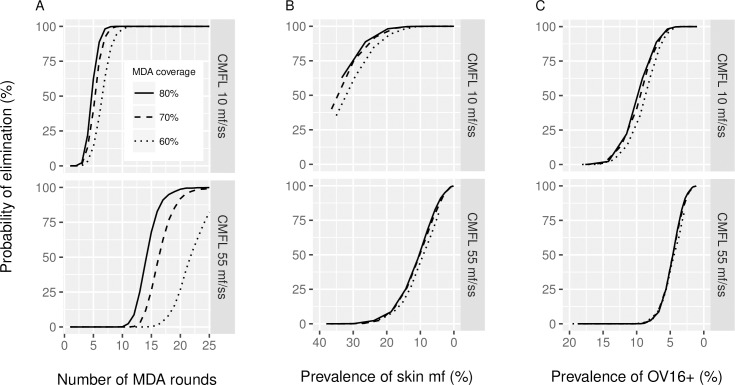Fig 4. Probability of elimination in relation to the duration of mass treatment and the one-year post-treatment mf prevalence or Ov16 antibody seroprevalence.
A) The probability of elimination in relation to treatment duration, assuming that treatment would be discontinued after the indicated treatment duration. B) Probability of elimination in relation to the post-MDA mf prevalence in the population aged 5 years and above, measured one year after 1, 2, 3, … 25 treatment rounds, assuming that no further treatments take place. The lines connect outcomes for different durations of MDA, for the indicated coverage levels (60%, 70%, or 80%). C), similar to B, with probability of elimination shown in relation to the post-MDA Ov16 antibody prevalence in children aged 0–9, measured one year after the 1, 2, 3, … 25 treatment rounds. The Ov16 antibody prevalence was estimated according to hypothesis 2, assuming that the Ov16 antibody test has a sensitivity of 80%, and specificity of 99%. Note that the values on the X-axis in B and C is sorted from highest to lowest, for comparability with A. Results are shown for transmission settings with moderate and high transmission (ABR 10,150 and 18,078; average pre-control CMFL 10 and 55 mf/skin snip, respectively). See Fig 2 for the information on the mean mf and Ov16 antibody prevalence in relation to the duration of MDA.

